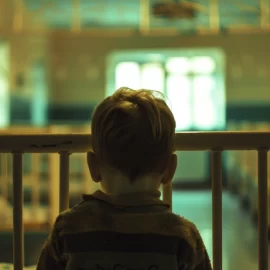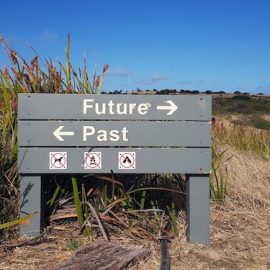

This article is an excerpt from the Shortform book guide to "Learning How to Learn" by Barbara Oakley and Terrence Sejnowski. Shortform has the world's best summaries and analyses of books you should be reading.
Like this article? Sign up for a free trial here .
What’s the difference between focused and diffuse thinking? How can you leverage these two modes to maximize learning?
Authors Barbara Oakley and Terrence Sejnowski offer a number of tips for enhancing your learning that are based on your brain’s ability to alternate between different modes of thinking. They assert that your brain operates in two separate modes, each of which contributes to learning and problem solving in different ways. They call these two modes “focused thinking” and “diffuse thinking.”
Read on to learn these ways of improving your learning ability.
Manipulate Your Modes of Thinking to Maximize Your Learning
The authors explain that focused thinking happens when you focus on something, such as a specific problem you’re trying to solve. In this mode, your brain activity gets concentrated in a particular network of neurons (which network depends on what you’re focusing on). Focused thinking can process information in detail, but it limits the scope of your thoughts to ideas that are already connected to that particular network.
They then explain that diffuse thinking happens when you let your mind wander, not focusing on anything in particular. In this mode, your brain activity is delocalized—it’s not concentrated in any particular network of neurons. Diffuse thinking doesn’t process information in detail, but it can link ideas from diverse parts of your brain to generate creative solutions or help you see the big picture.
| Additional Modes of Thinking Oakley and Sejnowski’s descriptions of diffuse and focused thinking correspond to what psychologist Edward de Bono calls “lateral” and “vertical” thinking, respectively (as Oakley herself notes in A Mind for Numbers). However, there is a subtle difference in how de Bono distinguishes between the two modes: He identifies lateral (diffuse) thinking as a mechanism for generating new possibilities, while vertical (focused) thinking is a mechanism for analyzing possibilities and selecting between them. Thus, Oakley and Sejnowski’s emphasis on using diffuse mode to generate creative solutions is consistent with de Bono’s presentation. But to Oakley and Sejnowski, the difference is between focusing on something and letting your mind wander, while to de Bono, it’s the difference between creatively generating new possibilities and analytically eliminating possibilities. Nevertheless, the authors all agree that you must use both modes to solve any difficult problem. De Bono arguably makes an even stronger case for this than Oakley and Sejnowski, because you have to use vertical (focused) thinking to select or implement a solution, and you have to use lateral (diffuse) thinking to generate the solution or list of possible solutions before you select one to implement. Oakley and Sejnowski present focused and diffuse thinking as the only modes of thinking: If you’re not focused on something, then you’re thinking in diffuse mode. But de Bono later goes on to define six modes of thinking, or “thinking hats,” as he calls them: “Blue hat” thinking: You’re thinking about the big picture, your overall objectives, or how something fits into achieving them. “White hat” thinking: You’re taking in objective information. “Red hat” thinking: You’re considering how you feel about something, emotionally. “Black hat” thinking: You’re looking for problems and risks, or voicing criticism. “Yellow hat” thinking: You’re looking for benefits or voicing positive feedback. “Green hat” thinking: You’re thinking outside the box, looking for original, creative ideas. |
Alternate Between Focus and Rest
The authors’ first tip related to modes of thought is that you should alternate between periods of intense mental focus and mental rest breaks. This improves your ability to solve problems because it leverages the handoff between your two modes of thinking.
Here’s how this looks in practice. First, focus on your studies until you get stuck or stop making progress. This focused thinking enables you to understand the problem (which requires processing detailed information). Then, take a break and let your mind wander. This allows your diffuse mode to find the solution when focused thinking no longer makes progress because the solution lies outside the active network. Finally, use focused thinking again to implement the solution, since that also requires more detailed processing.
| Additional Diffuse Thinking Tactics Other authors agree that your brain can only focus for a certain amount of time before you’ll get stuck, and they discuss additional diffuse thinking tactics to help your brain rest so that you can start making progress again after you get stuck. Two specific tactics they recommend are positive constructive daydreaming (PCD) and psychological halloweenism: To practice PCD, first shift your attention to something that takes very little focus, such as walking or folding laundry. Then, deliberately imagine a scene that evokes positive, playful feelings, such as a fond childhood memory, or an imaginary vacation. From this starting point, let your thoughts turn inward and just follow your mind wherever it wanders. Studies show that this type of daydreaming is more likely to generate creative solutions, possibly because it makes you less prone to slip into unproductive worry when you let your mind wander. To practice psychological halloweenism, imagine that you are someone else trying to solve the same problem. By putting yourself in someone else’s shoes, you may be able to see the problem from a different angle and come up with a creative solution. |
Do the Hardest Problems First
Oakley and Sejnowski’s second tip for maximizing different modes of thinking is to tackle the most difficult problems or subjects first when you’re taking a test, doing homework, or studying. They give two reasons for this:
First, you’ve got a better chance of solving a problem when you’re fresh than after your brain starts to get tired.
Second, starting with the hardest problems gives you more time to solve them, which gives you more opportunities to alternate between focused and diffuse thinking. If you’re pressed for time, you can work on a hard problem until you get stuck, then solve an easier problem or two before you come back to the hard one. According to Oakley and Sejnowski, this isn’t quite as effective for diffuse thinking as taking an actual break, but it still stimulates some diffuse thinking that can help you find the solution.
(Shortform note: Some experts disagree with Oakley and Sejnowski on this. For example, authors Judi Kesselman-Turkel and Franklynn Peterson recommend solving the easy problems first. They argue that starting with the easy problems stimulates your brain, much like doing warm-up stretches before intensive exercise prepares your body for the exertion. Some standardized testing agencies also advise you to do the easy problems first because the test is timed, and you can get more points by answering all the easy questions than by spending all your time on a few hard ones.)

———End of Preview———
Like what you just read? Read the rest of the world's best book summary and analysis of Barbara Oakley and Terrence Sejnowski's "Learning How to Learn" at Shortform .
Here's what you'll find in our full Learning How to Learn summary :
- How anyone can learn to master any subject
- Study tactics that you can use to excel in whatever you’re learning
- A look at the neuroscience behind how you learn






